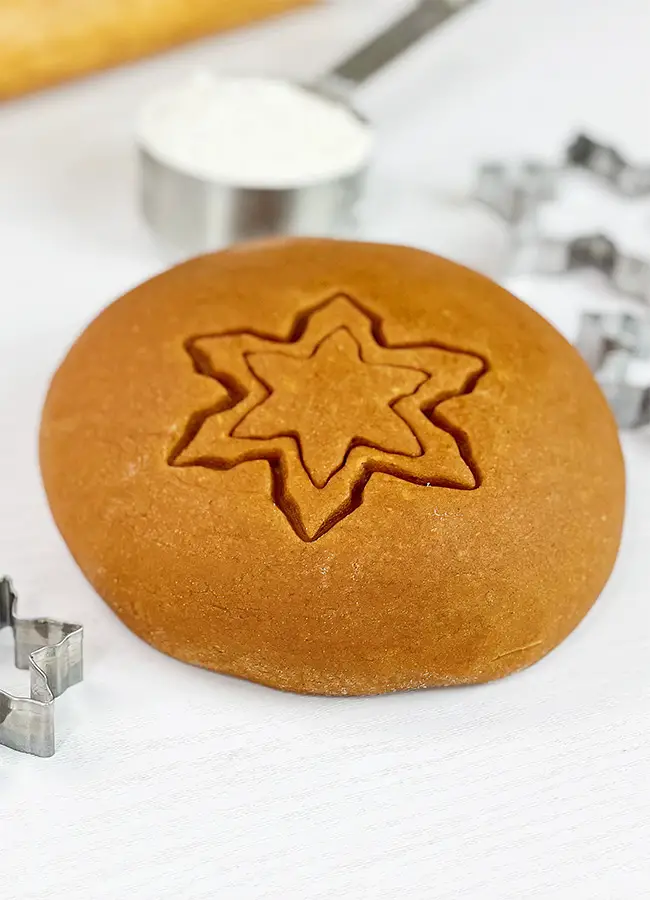
Today I’m going to show you how to make Gingerbread Cookie Dough Without Molasses. The main ingredient of this dough is caramelised sugar which gives it a beautiful color and a rich taste.
This dough is very pleasant to work with and can be stored for a very long time and the baked cookies can be stored for a very long time as well as. Cookies made with this dough hold their shape perfectly and are great for decorating. At the same time they have a very soft and tender texture.
Ingredients:
500g sugar
200g butter
900-1000 g all-purpose flour
200 ml hot boiled water
1 egg
½ tsp salt
1 tsp baking soda
2 tsp cinnamon
½ tsp ground ginger
½ tsp ground nutmeg
1 tsp allspice
Step 1
It is best to caramelise the sugar in a large heavy bottom pan with high sides. In the process the mixture will bobble a lot and increase in volume, so to make sure you’re not getting burned, use a large pan.
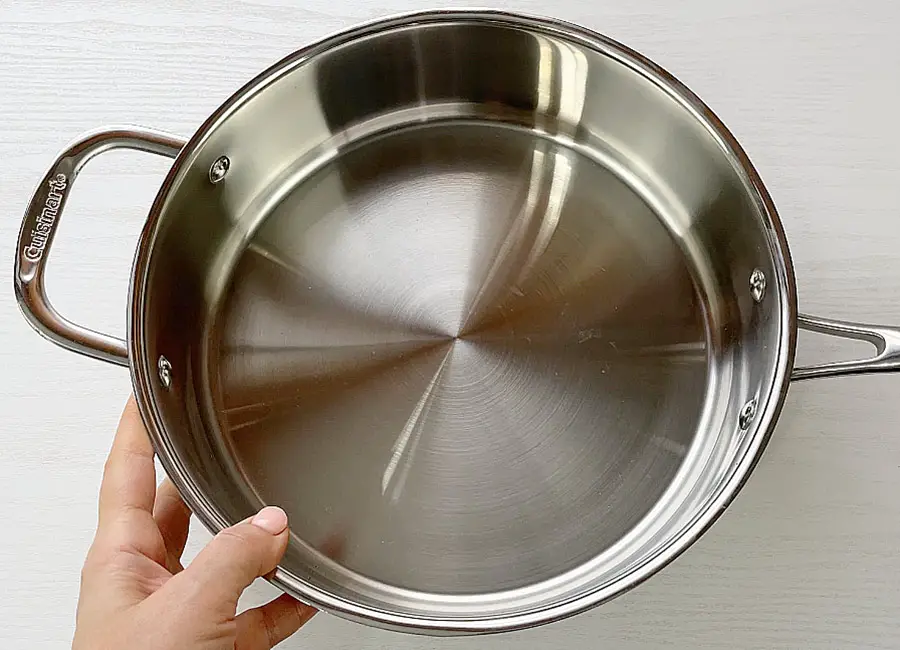
Step 2
Place the sugar in the pan and spread it evenly. Place the pan over medium heat and wait until the sugar starts melting down and you see an amber color ring near the sides of the pan.
It is very important not to stir the sugar at this stage. The only thing you can do is slightly shake the sauce pan to help the sugar melt evenly.
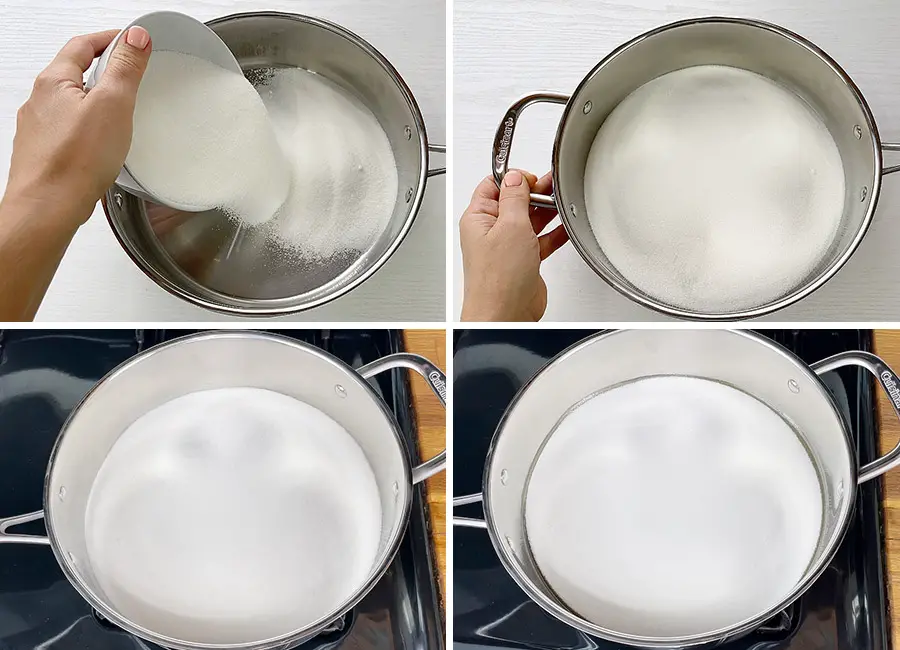
Step 3
When you can see about half an inch of melted sugar around the sides of the pan, using a heatproof spatula or a wooden spoon, carefully start mixing the rest of the dry sugar with the melted sugar. As you can see, the sugar is melting fast and doesn’t form any sugar lumps. When all the sugar has caramelized, it has a very runny consistency and deep amber color.
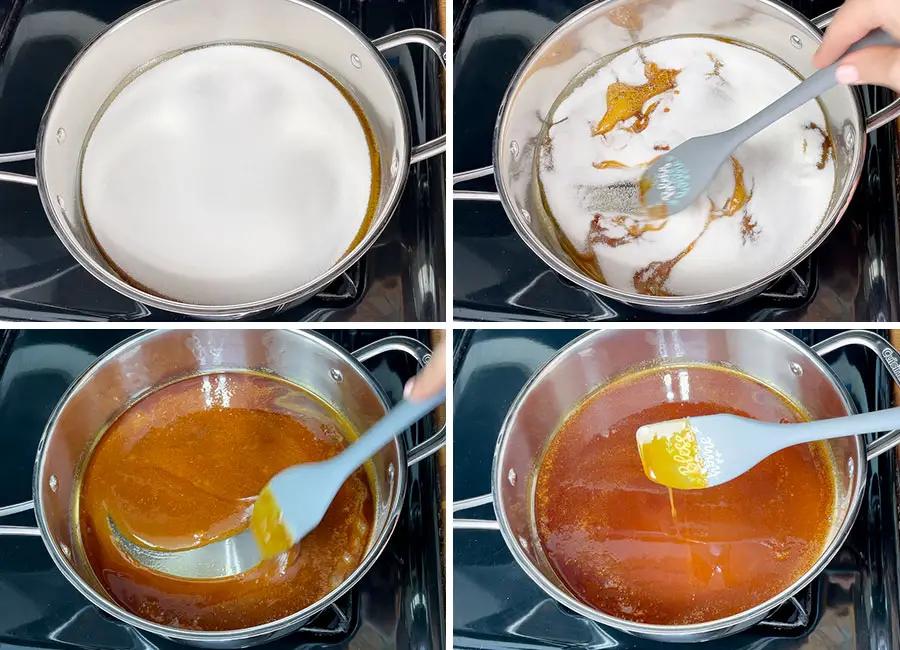
Step 4
Take the pan off the heat and add hot boiling water in 2-3 batches, mixing the sugar after each addition. Be very careful, as the mixture will bubble up.
After that add the butter, return the pan to the stove and keep cooking over LOW heat, constantly mixing until it has melted and no sugar lumps are left.
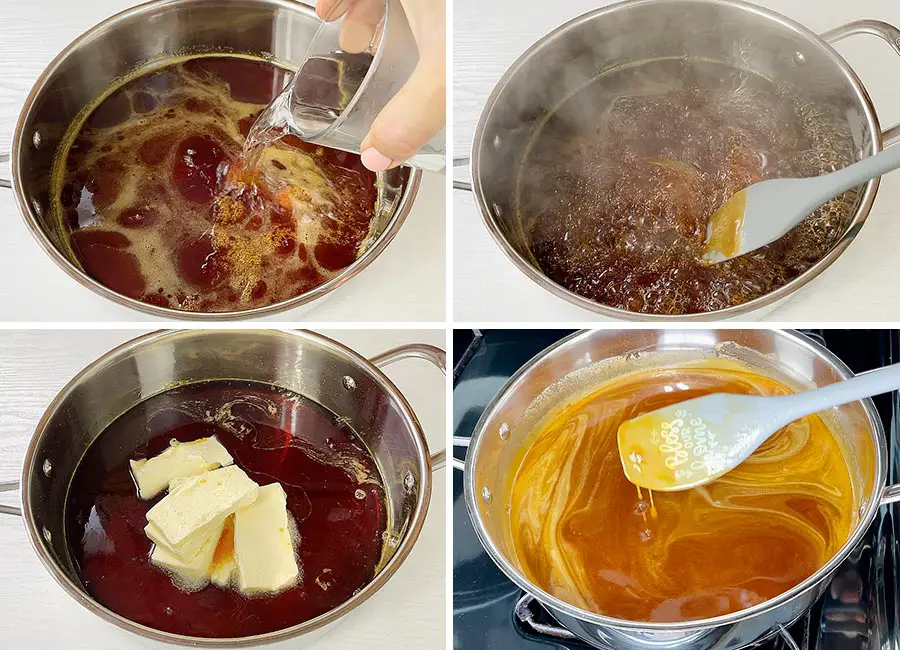
Step 5
Remove the pan from the heat and add salt, baking soda and all the spices. Mix very well to incorporate the seasoning. Baking soda will react with the caramelised sugar and the mixture will increase in volume.
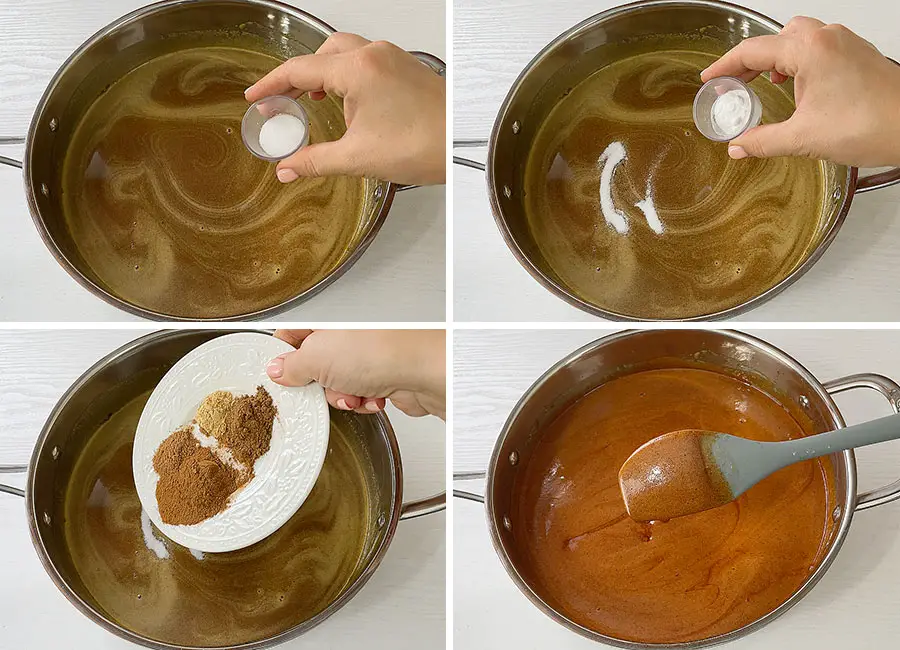
Step 6
Let the sugar mixture cool down to room temperature before adding the rest of the ingredients. During this time it will decrease in volume and thicken a little bit.
Add the egg and mix well. Next, gradually start adding the flour and mix after each addition.
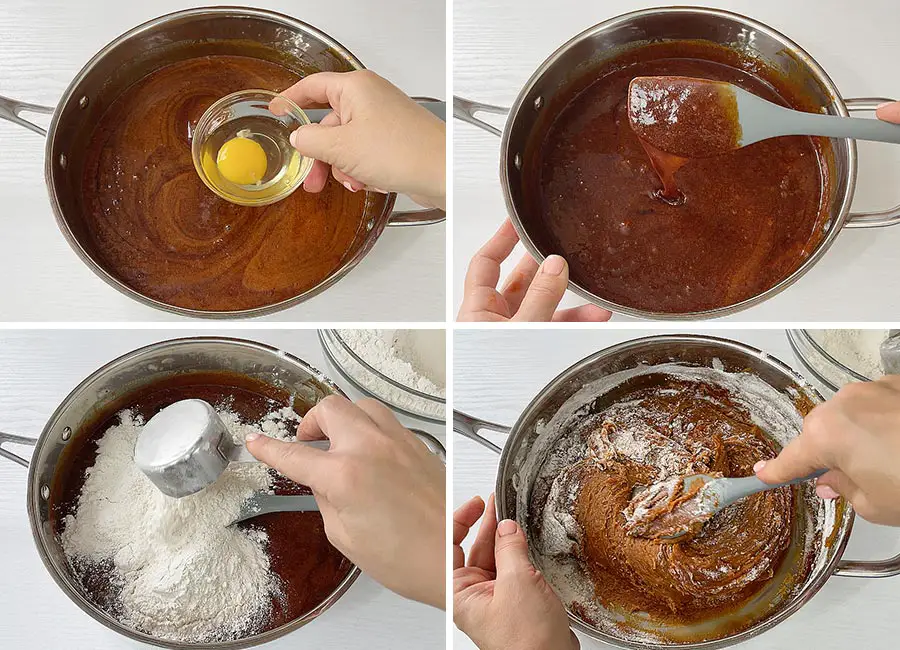
Step 7
When mixing with a spatula becomes too hard, place a good amount of flour onto a work surface and dump the dough in the middle. Sprinkle more flour on top and start kneading the dough, adding the rest of the flour as needed.
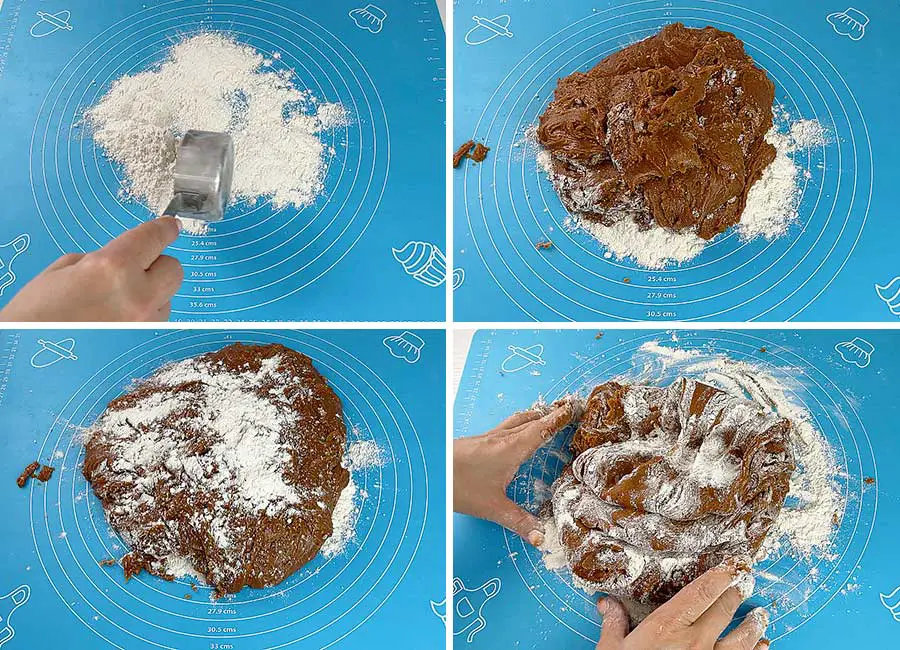
Don’t add the rest of the flour all at once. Everyone has different flour, so you may need a little bit more or less than indicated in the recipe. Be guided by the consistency of the dough.
If you put too much flour, the cookies will be dry and if you put too little, the cookies will spread and won’t hold their shape after baking.
The cookie dough should turn out soft and not sticky to the hands.
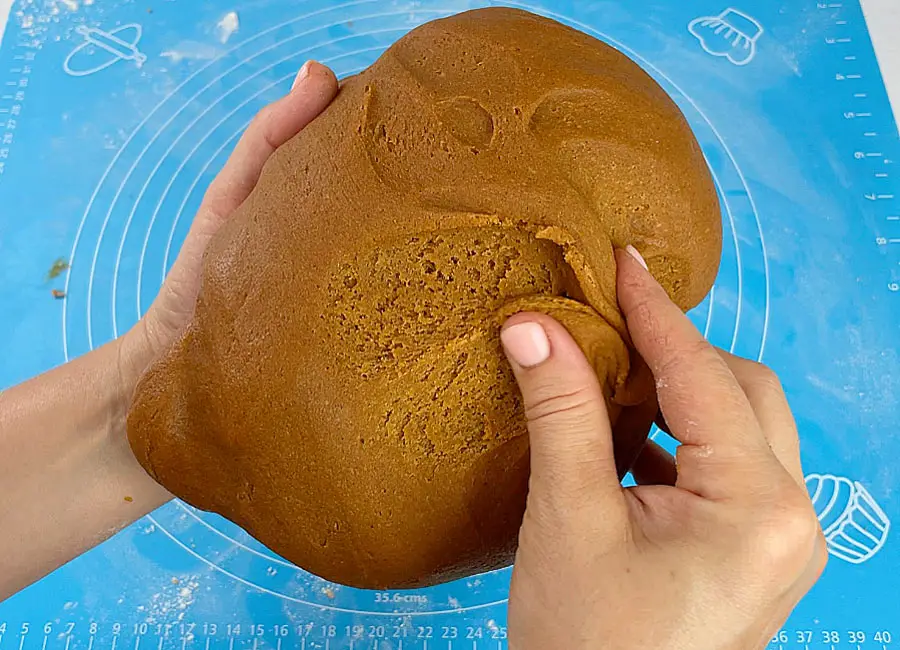
I like this dough because I can store it for up to a month in the refrigerator or up to 6 months in the freezer. Baked cookies also have a long shelf life and can be stored in an airtight container for up to 6 months.
Step 8
I like to divide the dough into three pieces and then cover each piece with plastic wrap. The dough has to be refrigerated for a minimum of 6 hours.
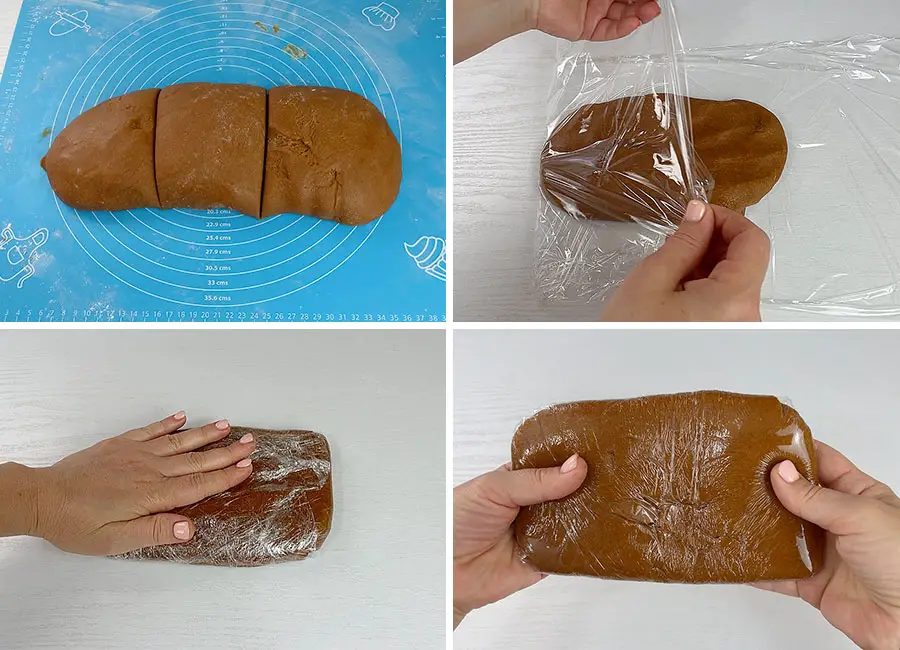
Step 9
Chilled dough is much harder, so before rolling it let it sit for 10 minutes at room temperature. Slightly dust the work surface with flour, place the dough on top, sprinkle more flour on top of the dough and roll it out. I like to roll the dough between the two sticks that I made myself. That way every single cookie will be exactly the same thickness. I’m showing how to make the sticks in my other Gingerbread Cookie without Molasses tutorial.
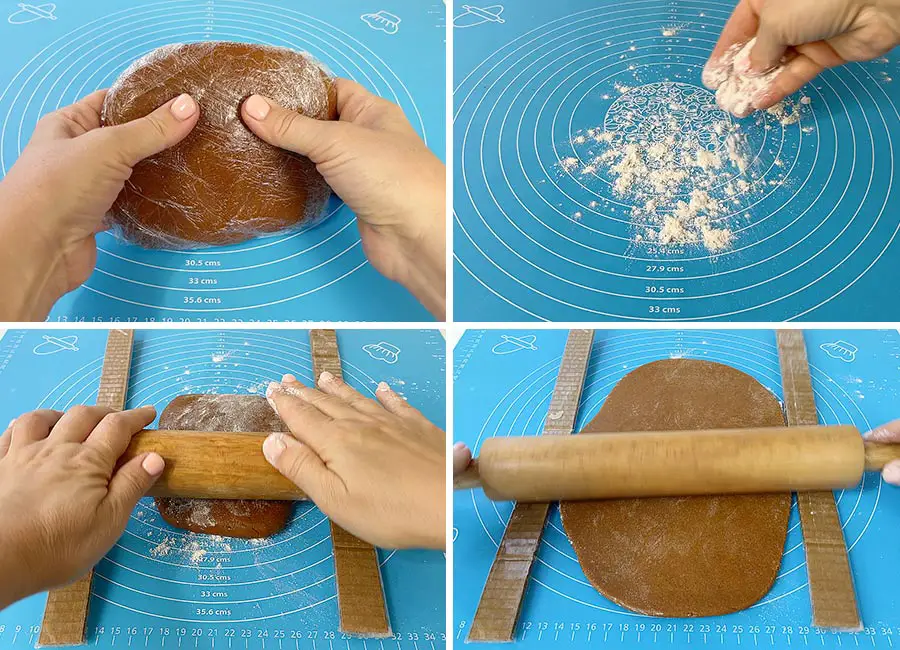
Step 10
Using a cookie cutter, cut the cookies out. Transfer the cookies to a baking sheet covered with parchment paper or Teflon sheet and bake at 350°F degrees (180°C) for about 8-10 minutes. If you press on top of the cookie, it should bounce right back.
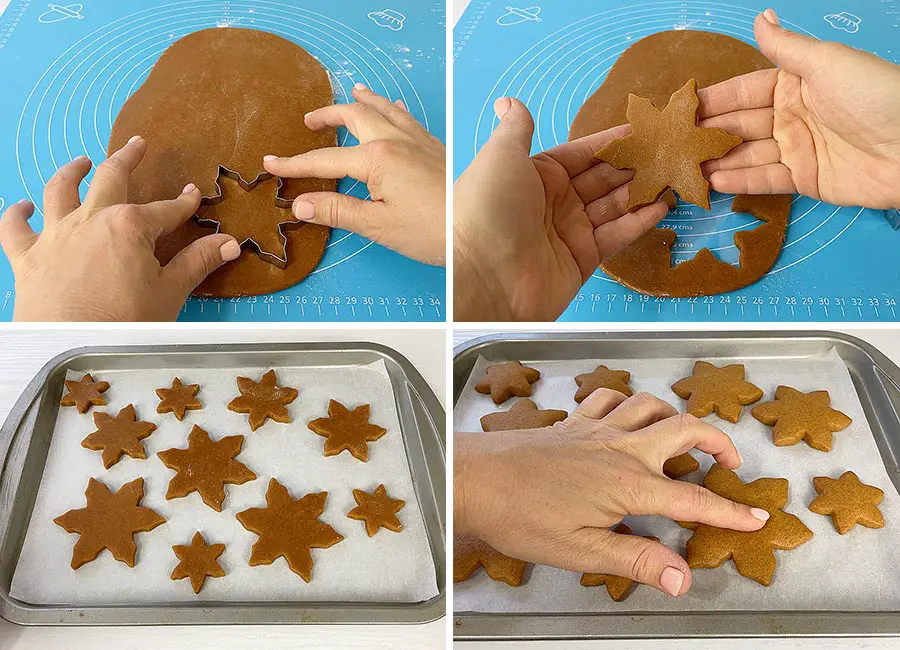
As you can see the cookie is perfectly shaped after baking.

*To make the surface completely flat, place a cutting board on top of the hot cookies, slightly press and let them cool completely.
Freshly baked gingerbread cookies are a little bit hard on the outside, but place them into an airtight container for a few hours and they will soften.
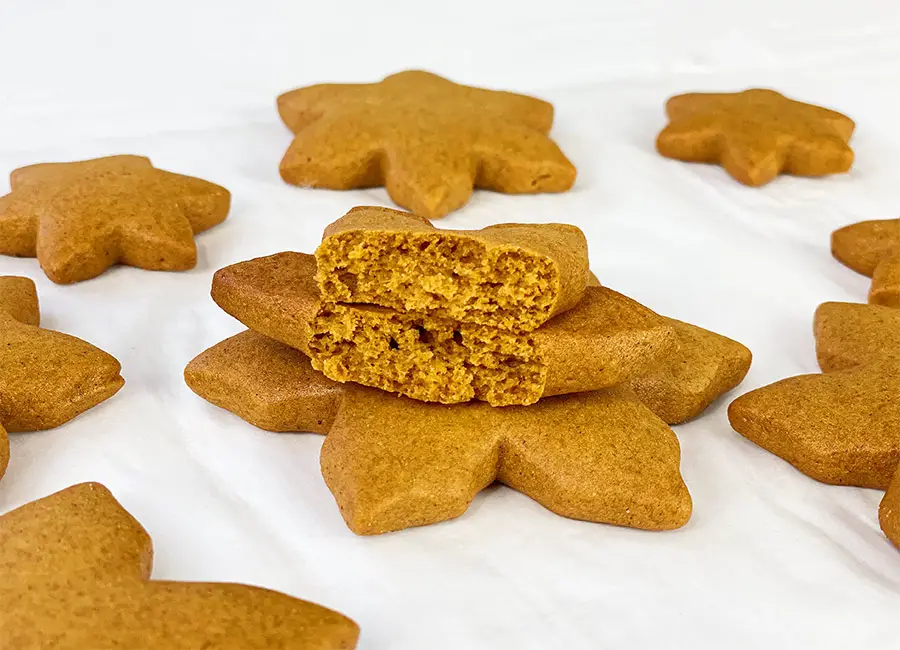
THIS POST CONTAINS AFFILIATE LINKS, WHICH MEANS I MAKE A SMALL COMMISSION AT NO EXTRA COST TO YOU. PLEASE SEE MY FULL DISCLOSURE POLICY FOR DETAILS.
Make sure to watch my YouTube video recipe for step-by-step instructions and see how I make this Gingerbread Cookie Dough without Molasses! Want new recipe updates? Make sure to subscribe to my YouTube Channel!
Tips for Making Gingerbread Cookie Dough:
- It is best to caramelise the sugar in a big heavy bottom pan with high sides.
- When caramelising the sugar, it is very important not to stir the sugar until you see about half an inch of melted sugar around the sides of the pan,
- Be very careful when adding the hot boiling water, as the mixture will bubble up.
- Let the sugar mixture cool down to room temperature before adding the egg.
- Don’t add all the flour at once. Everyone has different flour, so you may need a little bit more or less, then indicated in the recipe. Be guided by the consistency of the dough. The cookie dough should turn out soft and not sticky to the hands.
How to Store the Gingerbread Cookie Dough:
- You can store the dough tightly wrapped in the refrigerator for up to a month.
- You can store the dough tightly wrapped in the freezer for up to 6 months.
- Baked gingerbread cookies can be stored in an airtight container for up to 6 months.
Pin For Later
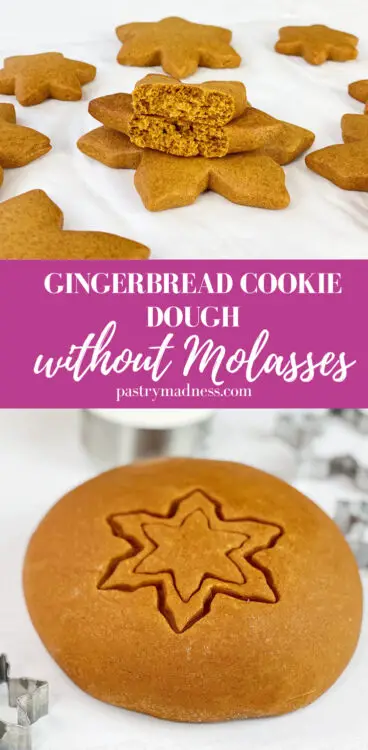

Gingerbread Cookie Dough Without Molasses
Ingredients
Method
- It is best to caramelise the sugar in a large heavy bottom pan with high sides. In the process the mixture will bobble a lot and increase in volume, so to make sure you're not getting burned, use a large pan.
- Place the sugar in the pan and spread it evenly. Place the pan over medium heat and wait until the sugar starts melting down and you see an amber color ring near the sides of the pan.It is very important not to stir the sugar at this stage. The only thing you can do is slightly shake the sauce pan to help the sugar melt evenly.
- When you can see about half an inch of melted sugar around the sides of the pan, using a heatproof spatula or a wooden spoon, carefully start mixing the rest of the dry sugar with the melted sugar. When all the sugar has caramelized, it has a very runny consistency and deep amber color.
- Take the pan off the heat and add hot boiling water in 2-3 batches, mixing the sugar after each addition. Be very careful, as the mixture will bubble up.After that add the butter, return the pan to the stove and keep cooking over LOW heat, constantly mixing until it has melted and no sugar lumps are left.
- Remove the pan from the heat and add salt, baking soda and all the spices. Mix very well to incorporate the seasoning. Baking soda will react with the caramelised sugar and the mixture will increase in volume.
- Let the sugar mixture cool down to room temperature before adding the rest of the ingredients. During this time it will decrease in volume and thicken a little bit.Add the egg and mix well. Next, gradually start adding the flour and mix after each addition.
- When mixing with a spatula becomes too hard, place a good amount of flour onto a work surface and dump the dough in the middle. Sprinkle more flour on top and start kneading the dough, adding the rest of the flour as needed. The cookie dough should turn out soft and not sticky to the hands.
- I like to divide the dough into three pieces and then cover each piece with plastic wrap. The dough has to be refrigerated for a minimum of 6 hours.
- Chilled dough is much harder, so before rolling it let it sit for 10 minutes at room temperature. Slightly dust the work surface with flour, place the dough on top, sprinkle more flour on top of the dough and roll it out.
- Using a cookie cutter, cut the cookies out. Transfer the cookies to a baking sheet covered with parchment paper or Teflon sheet and bake at 350°F degrees (180°C) for about 8-10 minutes. If you press on top of the cookie, it should bounce right back.
- Freshly baked gingerbread cookies are a little bit hard on the outside, but place them into an airtight container for a few hours and they will soften.
Notes
- It is best to caramelise the sugar in a big heavy bottom pan with high sides.When caramelising the sugar, it is very important not to stir the sugar until you see about half an inch of melted sugar around the sides of the pan,
- Be very careful when adding the hot boiling water, as the mixture will bubble up.
- Let the sugar mixture cool down to room temperature before adding the egg.
- Don’t add all the flour at once. Everyone has different flour, so you may need a little bit more or less, then indicated in the recipe. Be guided by the consistency of the dough. The cookie dough should turn out soft and not sticky to the hands.
- You can store the dough tightly wrapped in the refrigerator for up to a month.
- You can store the dough tightly wrapped in the freezer for up to 6 months.
- Baked gingerbread cookies can be stored in an airtight container for up to 6 months.


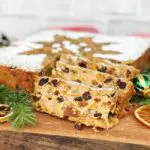

Leave a Reply